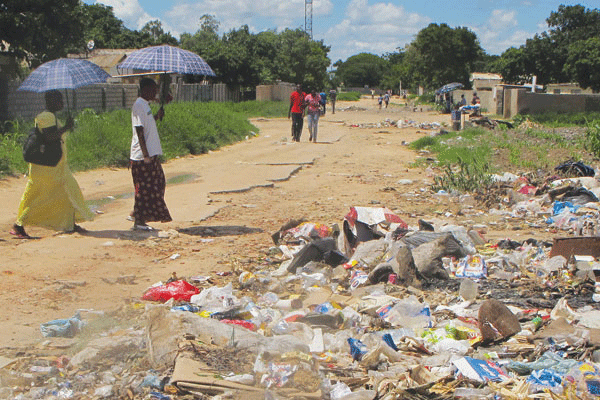
About six years ago, Environmental Management Agency spokesperson Steady Kangata riled many when he suggested that the solution to the country’s sanitary waste disposal challenge was in turning back the clock.
environment By Chipo Masara

Instead of using diapers, he suggested going back to the long-abandoned re-usable cotton “nappies”. While his suggestion was rubbished as retrogressive “typical Stone Age thinking”, it now appears he may have had a point.
The sanitary pads and disposable diapers problem has now spiralled out of control and is causing local authorities headaches.
The use of diapers has turned sanitary waste into a major environmental menace. Most people — especially those in high-density suburbs are resorting to dumping used diapers and sanitary pads at open dumping sites that are sprouting everywhere in urban residential areas.
It has become common to see swarms flies busy at work on poop-filled diapers — or stray dogs tearing into used sanitary pads.
The haphazard dumping of sanitary waste material that should ideally be properly disposed has often been blamed on the non-collection of refuse by the responsible authorities. The authorities in turn always blame it on lack of money to allow them to effectively fulfil their mandate.
A mother of a three-month-old baby said in an interview last week that although she was grateful for the availability of the disposable pampers. However, she said she was at a loss as to how to properly dispose of them. In desperation, she said she had resolved to bury them in the ground as trying to burn them had not worked as they would not burn.
- Chamisa under fire over US$120K donation
- Mavhunga puts DeMbare into Chibuku quarterfinals
- Pension funds bet on Cabora Bassa oilfields
- Councils defy govt fire tender directive
Keep Reading
But burying used sanitary pads and diapers in the ground is a move that is bound to have devastating effects on water supplies as, through seepage, the waste is bound to eventually contaminate the source of drinking water.
As a result, diseases such as cholera and typhoid break out. While speaking about the current typhoid scourge, Health and Child Care minister David Parirenyatwa said 95% of borehole water even in low-density areas like Borrowdale is contaminated.
And then there are some who have reportedly taken to flushing the sanitary waste down their toilets. This has, however, often led to costly blockages and sewer-related problems.
Additionally, used menstrual pads are often dumped everywhere. Unknown to most people is that when these pads are flushed down the toilet, they pollute streams and rivers, enabling harmful organisms to enter the food chain.
There is general consensus among environmentalists that the solution lies in the sorting of garbage at household level, with a separate bin set aside just for sanitary waste, which would then be taken for incineration.
“We are up in arms with communities for burning and burying waste. Through seepage, the sanitary waste will mix with water resulting in such diseases as typhoid. We are destroying not only the environment but our health too,” said Misheck Kanotunga of Zimbabwe Urban Environment Waste Management Trust. He said there was need to take sanitary waste to the nearest health centres for incineration while the responsible authorities pondered on how best to deal with the problem.
What has become clear is that many people are using disposal diapers and sanitary pads and indications are the usage is bound to go up.
As long as there is no clear sanitary waste management plan in place, the environment is bound to be overwhelmed.
For feedback, email [email protected]











